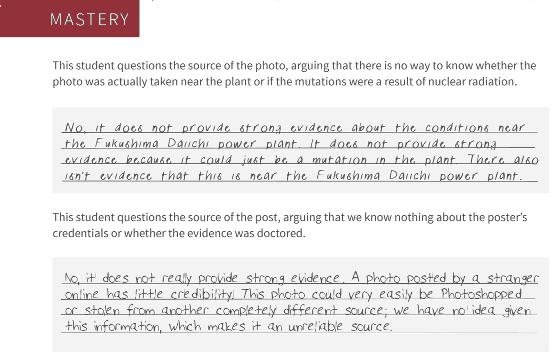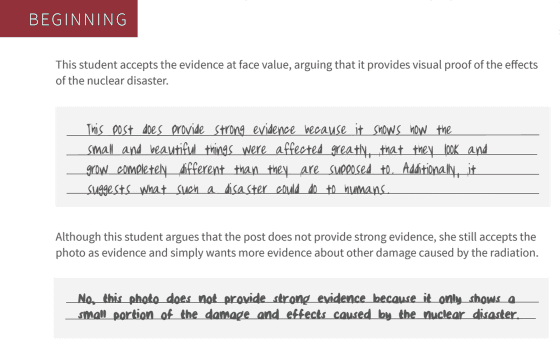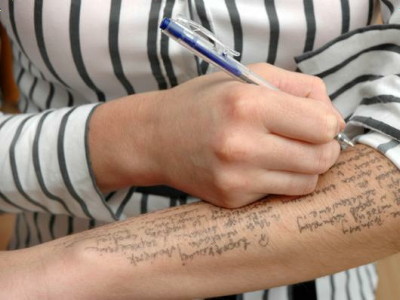Most students discovered that there is no distinction between ordinary articles and "advertisement" articles

When I was born, there is already the Internet, a survey report that young people who have used the net as a tool as a matter of course are not good at checking the credibility and reliability of the information on the Internet I will.
EVALUATING INFORMATION: THE CORNER STONE OF CIVIC ONLINE REASONING
(PDF file)https://sheg.stanford.edu/upload/V3LessonPlans/Executive%20Summary%2011.21.16.pdf
Most Students Do not Know When News Is Fake, Stanford Study Finds - WSJ
http://www.wsj.com/articles/most-students-dont-know-when-news-is-fake-stanford-study-finds-1479752576
The research team at Stanford University conducted a survey on 7804 junior high school students asking them to judge whether websites articles and SNS information such as Facebook and Twitter are reliable. The survey is conducted in such a way that each information on the website is described as "reliable" and "reason to think".

Although it is a modern junior high school student who is a digital native generation capable of communicating messages with friends and posting freely on SNS, it is a modern junior high school student who is a generation of ordinary articles and articles written for " 82% of the students were unable to distinguish between them). For example, when judging the reliability of an interview that appeals the necessity of young people to receive financial advice written by advertising articles as bank statements, more than two-thirds of junior high school students are "advertising articles" He did not take it into account.
In the survey, it is also known how the students are paying attention to what creditworthiness of the content of information seen on the Internet is being judged. First of all, students emphasize whether the content is detailed or not. Moreover, it is said that it tends to think that the bigger the attached picture is, the more reliable it is.
This is a question: "Is the posting of the image" Flower photos around the Fukushima Daiichi nuclear power plant "a strong evidence of the dangers of the environment around the Fukushima Daiichi nuclear power plant?"

In the case of a person who completed school education, "I can easily create such images in Photoshop," "There is no evidence that this picture was taken around the Fukushima Daiichi nuclear power plant" It is not answered ".

On the other hand, in the case of junior high school students, from the strange shape of the flower in the image promptly admits the proof as evidence or from the opinion denying that evidence is not due to the fact that the degree of flower deformation is small There is a tendency not to consider the credibility of the image.

Some schools are conducting education to raise IT literacy, such as the importance of questioning the credibility of Internet information and how to choose reliable information, but very few It is the present condition that we stay in. In most schools, traditional textbook-based educational laws are adopted, and some researchers appeal to the necessity of education that is in line with the Internet age, worried about the lack of education that fosters media literacy.
Related Posts:
in Note, Posted by darkhorse_log







